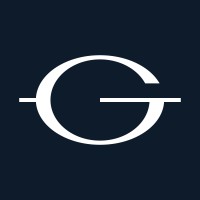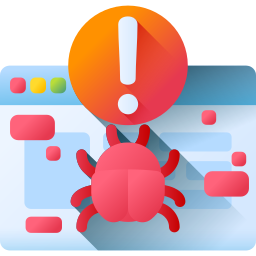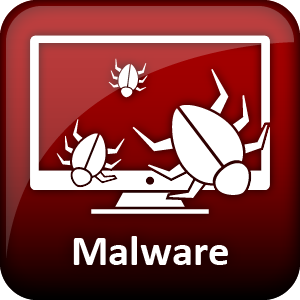
Boeing Company Cyber Security Posture
boeing.comAs a leading global aerospace company, Boeing develops, manufactures and services commercial airplanes, defense products and space systems for customers in more than 150 countries. As a top U.S. exporter, the company leverages the talents of a global supplier base to advance economic opportunity, sustainability and community impact. Boeing’s diverse team is committed to innovating for the future, leading with sustainability, and cultivating a culture based on the company’s core values of safety, quality and integrity. Explore career opportunities: boeing.com/careers Boeing is an Equal Opportunity Employer. Employment decisions are made without regard to race, color, religion, national origin, gender, sexual orientation, gender identity, age, physical or mental disability, genetic factors, military/veteran status or other characteristics protected by law.
Boeing Company Details
boeing
117478 employees
3445336.0
none
Aviation & Aerospace
boeing.com
Scan still pending
BOE_2319025
In-progress
Between 200 and 800
This score is AI-generated and less favored by cyber insurers, who prefer the TPRM score.
 Boeing Global Score
Boeing Global Score.png)

Boeing Company Scoring based on AI Models
| Model Name | Date | Description | Current Score Difference | Score |
|---|---|---|---|---|
| AVERAGE-Industry | 03-12-2025 | This score represents the average cybersecurity rating of companies already scanned within the same industry. It provides a benchmark to compare an individual company's security posture against its industry peers. | N/A | Between 200 and 800 |
Boeing Company Cyber Security News & History
| Entity | Type | Severity | Impact | Seen | Url ID | Details | View |
|---|---|---|---|---|---|---|---|
| Boeing | Data Leak | 60 | 3 | 12/2019 | BOE1498523 | Link | |
Rankiteo Explanation : Attack with significant impact with internal employee data leaksDescription: The names, home addresses, phone numbers, and email addresses of 1000 employees of the biggest aerospace and defense contractor in the United States were accidentally disclosed by Boeing. More than 6,000 Boeing employees, including senior executives, program managers, and government relations staff, had substantial personal information exposed in publicly accessible files held by the digital consultant IMGE. Although the names of some of the files suggest they were made around the beginning of 2018, it is unknown how long they were available to the general public. A firm representative said that the information was made public due to human error on the part of the website's vendor. | |||||||
| Boeing | Data Leak | 60 | 3 | 02/2017 | BOE550191123 | Link | |
Rankiteo Explanation : Attack with significant impact with internal employee data leaksDescription: After an unintentional data leak, Boeing, the massive aerospace company, notified 36,000 workers, an employee of the company accidentally sent his spouse, who was not employed by the company, an email containing a spreadsheet that contained the personal information of his coworkers. The individual transmitted a file that included the names, birthplaces, BEMSIDs bespoke employee ID numbers, accounting department codes, and other sensitive personally identifiable information of 36,000 Boeing workers. Olson claims that hidden columns in the spreadsheet held dates of birth and social security numbers. The organisation intends to impose more restrictions on sensitive information and mandate more training for staff members on handling sensitive data in order to prevent future occurrences of this kind. | |||||||
| Boeing | Ransomware | 100 | 5 | 11/2017 | BOE106261123 | Link | |
Rankiteo Explanation : Attack threatening the organization’s existenceDescription: The ransomware organisation LockBit released data purportedly taken from the massive aerospace company Boeing. The group says it has taken a tonne of confidential information from the business and threatens to release it if Boeing doesn't get in touch with them by the first deadline. The business stated that while it has acknowledged that a cyberattack affected its services segment, the inquiry is still underway. After analysing the leaked data, Bleeping Computer concluded that the majority of the data that was made public were system backups. | |||||||
Boeing Company Subsidiaries

As a leading global aerospace company, Boeing develops, manufactures and services commercial airplanes, defense products and space systems for customers in more than 150 countries. As a top U.S. exporter, the company leverages the talents of a global supplier base to advance economic opportunity, sustainability and community impact. Boeing’s diverse team is committed to innovating for the future, leading with sustainability, and cultivating a culture based on the company’s core values of safety, quality and integrity. Explore career opportunities: boeing.com/careers Boeing is an Equal Opportunity Employer. Employment decisions are made without regard to race, color, religion, national origin, gender, sexual orientation, gender identity, age, physical or mental disability, genetic factors, military/veteran status or other characteristics protected by law.
Access Data Using Our API

Get company history
.png)
Boeing Cyber Security News
To protect F-47 plans from hackers, Boeing should lean on CMMC, zero trust: DoD official
Boeing previously declined to comment to Breaking Defense on their cybersecurity plans for the F-47 project, and a spokesperson did not ...
Press Release: Boeing automates ANSP compliance services with Shift5
Shift5 is the dual use, subscription-based observability platform for onboard operational technology (OT), enabling smarter, faster decisions ...
Hawaiian Airlines reports cybersecurity breach
A June 26 cybersecurity attack has impacted IT systems at Hawaiian Airlines, but the carrier is operating its full flight schedule and said ...
Boeing picks IT veteran as chief information digital officer
Dana Deasy, who previously served as CIO for the U.S. Department of Defense, will lead information security, IT and data analytics for the ...
Boeing, Shift5 Partner On ANSP Compliance Service
Shift5 touts CM as “the only original equipment manufacturer agnostic platform” that automatically captures and analyzes core network security ...
FAA proposes new cybersecurity regulations for newly built aircraft
The Federal Aviation Administration (FAA) has introduced new cybersecurity regulations for newly built aircraft to protect aircraft ...
Boeing Partners with Shift5 to Automate ANSP Compliance for Enhanced Aviation Cybersecurity
Shift5 is a leading provider of onboard operational technology observability solutions, supporting aerospace, rail, maritime, and defense ...
FAA addresses aircraft design cybersecurity
IEEE Senior Member Kayne McGladrey explains, “Connected systems introduce vulnerabilities that could be entry points for cyberattacks. Ensuring ...
Boeing cyberattack: Protecting assets from digital crime
As a leader in the aerospace and manufacturing industry with connections to the government, it is easy to see why Boeing is an attractive ...

Boeing Similar Companies

AVIC International Holding Corporation
AVIC International Holding Corporation (AVIC INTERNATIONAL) is a global diversified holding business group, under the control of Aviation Industry Corporation of China (AVIC). Our business involves aviation, electronics, international business, modern services, etc. The corporation owns 8 domestic a

Gulfstream Aerospace
Inspired by the belief that aviation could fuel business growth, Gulfstream Aerospace Corp. invented the first purpose-built business aircraft, the Gulfstream I, which first flew in 1958. Today, more than 3,000 aircraft are in service around the world. Together with parent company General Dynamics,

Russian Helicopters, JSC
Joint Stock Company Russian Helicopters, a subsidiary of UIC Oboronprom, controls all Russian helicopter industry enterprises. Mil Moscow Helicopter Plant, Kamov, and Kazan Helicopters conduct R&D. Serial production plants were integrated into the Russian Helicopters group: Kazan Helicopters man

Frequently Asked Questions
Explore insights on cybersecurity incidents, risk posture, and Rankiteo's assessments.
Boeing CyberSecurity History Information
How many cyber incidents has Boeing faced?
Total Incidents: According to Rankiteo, Boeing has faced 3 incidents in the past.
What types of cybersecurity incidents have occurred at Boeing?
Incident Types: The types of cybersecurity incidents that have occurred incidents Ransomware and Data Leak.
How does Boeing detect and respond to cybersecurity incidents?
Detection and Response: The company detects and responds to cybersecurity incidents through remediation measures with Implement more restrictions on sensitive information, Mandate more training for staff members on handling sensitive data.
Incident Details
Can you provide details on each incident?

Incident : Ransomware
Title: LockBit Ransomware Attack on Boeing
Description: The ransomware organisation LockBit released data purportedly taken from the massive aerospace company Boeing. The group says it has taken a tonne of confidential information from the business and threatens to release it if Boeing doesn't get in touch with them by the first deadline. The business stated that while it has acknowledged that a cyberattack affected its services segment, the inquiry is still underway. After analysing the leaked data, Bleeping Computer concluded that the majority of the data that was made public were system backups.
Type: Ransomware
Threat Actor: LockBit
Motivation: Extortion

Incident : Data Leak
Title: Boeing Data Leak
Description: An employee of Boeing accidentally sent a spreadsheet containing personal information of 36,000 coworkers to their spouse, who was not employed by the company.
Type: Data Leak
Attack Vector: Accidental Email
Threat Actor: Internal Employee
Motivation: Accidental

Incident : Data Leak
Title: Boeing Employee Data Disclosure Incident
Description: The names, home addresses, phone numbers, and email addresses of 1000 employees of the biggest aerospace and defense contractor in the United States were accidentally disclosed by Boeing. More than 6,000 Boeing employees, including senior executives, program managers, and government relations staff, had substantial personal information exposed in publicly accessible files held by the digital consultant IMGE.
Type: Data Leak
Attack Vector: Human Error
Motivation: Accidental
What are the most common types of attacks the company has faced?
Common Attack Types: The most common types of attacks the company has faced is Data Leak.
Impact of the Incidents
What was the impact of each incident?

Incident : Ransomware BOE106261123
Data Compromised: System backups

Incident : Data Leak BOE550191123
Data Compromised: Names, Birthplaces, BEMSIDs, Accounting department codes, Dates of birth, Social security numbers

Incident : Data Leak BOE1498523
Data Compromised: Names, Home Addresses, Phone Numbers, Email Addresses
What types of data are most commonly compromised in incidents?
Commonly Compromised Data Types: The types of data most commonly compromised in incidents are System backups, Names, Birthplaces, BEMSIDs, Accounting department codes, Dates of birth, Social security numbers and Personal Information.
Which entities were affected by each incident?

Incident : Data Leak BOE1498523
Entity Type: Company
Industry: Aerospace and Defense
Location: United States
Size: Large
Response to the Incidents
What measures were taken in response to each incident?

Incident : Data Leak BOE550191123
Remediation Measures: Implement more restrictions on sensitive information, Mandate more training for staff members on handling sensitive data
Data Breach Information
What type of data was compromised in each breach?

Incident : Data Leak BOE550191123
Type of Data Compromised: Names, Birthplaces, BEMSIDs, Accounting department codes, Dates of birth, Social security numbers
Number of Records Exposed: 36000
Sensitivity of Data: High
File Types Exposed: Spreadsheet
Personally Identifiable Information: Names, Birthplaces, BEMSIDs, Accounting department codes, Dates of birth, Social security numbers

Incident : Data Leak BOE1498523
Type of Data Compromised: Personal Information
Number of Records Exposed: 6000
Sensitivity of Data: High
Personally Identifiable Information: Names, Home Addresses, Phone Numbers, Email Addresses
What measures does the company take to prevent data exfiltration?
Prevention of Data Exfiltration: The company takes the following measures to prevent data exfiltration: Implement more restrictions on sensitive information, Mandate more training for staff members on handling sensitive data.
Ransomware Information
Was ransomware involved in any of the incidents?
Lessons Learned and Recommendations
What lessons were learned from each incident?

Incident : Data Leak BOE550191123
Lessons Learned: Implement more restrictions on sensitive information and mandate more training for staff members on handling sensitive data.
What are the key lessons learned from past incidents?
Key Lessons Learned: The key lessons learned from past incidents are Implement more restrictions on sensitive information and mandate more training for staff members on handling sensitive data.
References
Where can I find more information about each incident?

Incident : Ransomware BOE106261123
Source: Bleeping Computer
Where can stakeholders find additional resources on cybersecurity best practices?
Additional Resources: Stakeholders can find additional resources on cybersecurity best practices at and Source: Bleeping Computer.
Investigation Status
What is the current status of the investigation for each incident?

Incident : Ransomware BOE106261123
Investigation Status: Ongoing
Post-Incident Analysis
What were the root causes and corrective actions taken for each incident?

Incident : Data Leak BOE550191123
Root Causes: Accidental email by an employee
Corrective Actions: Implement more restrictions on sensitive information, Mandate more training for staff members on handling sensitive data

Incident : Data Leak BOE1498523
Root Causes: Human Error
What corrective actions has the company taken based on post-incident analysis?
Corrective Actions Taken: The company has taken the following corrective actions based on post-incident analysis: Implement more restrictions on sensitive information, Mandate more training for staff members on handling sensitive data.
Additional Questions
General Information
Who was the attacking group in the last incident?
Last Attacking Group: The attacking group in the last incident were an LockBit and Internal Employee.
Impact of the Incidents
What was the most significant data compromised in an incident?
Most Significant Data Compromised: The most significant data compromised in an incident were System backups, Names, Birthplaces, BEMSIDs, Accounting department codes, Dates of birth, Social security numbers, Names, Home Addresses, Phone Numbers and Email Addresses.
Data Breach Information
What was the most sensitive data compromised in a breach?
Most Sensitive Data Compromised: The most sensitive data compromised in a breach were System backups, Names, Birthplaces, BEMSIDs, Accounting department codes, Dates of birth, Social security numbers, Names, Home Addresses, Phone Numbers and Email Addresses.
What was the number of records exposed in the most significant breach?
Number of Records Exposed in Most Significant Breach: The number of records exposed in the most significant breach was 960.0.
Lessons Learned and Recommendations
What was the most significant lesson learned from past incidents?
Most Significant Lesson Learned: The most significant lesson learned from past incidents was Implement more restrictions on sensitive information and mandate more training for staff members on handling sensitive data.
References
What is the most recent source of information about an incident?
Most Recent Source: The most recent source of information about an incident is Bleeping Computer.
Investigation Status
What is the current status of the most recent investigation?
Current Status of Most Recent Investigation: The current status of the most recent investigation is Ongoing.
Post-Incident Analysis
What was the most significant root cause identified in post-incident analysis?
Most Significant Root Cause: The most significant root cause identified in post-incident analysis was Accidental email by an employee, Human Error.
What was the most significant corrective action taken based on post-incident analysis?
Most Significant Corrective Action: The most significant corrective action taken based on post-incident analysis was Implement more restrictions on sensitive information, Mandate more training for staff members on handling sensitive data.
What Do We Measure?
















Every week, Rankiteo analyzes billions of signals to give organizations a sharper, faster view of emerging risks. With deeper, more actionable intelligence at their fingertips, security teams can outpace threat actors, respond instantly to Zero-Day attacks, and dramatically shrink their risk exposure window.
These are some of the factors we use to calculate the overall score:
Identify exposed access points, detect misconfigured SSL certificates, and uncover vulnerabilities across the network infrastructure.
Gain visibility into the software components used within an organization to detect vulnerabilities, manage risk, and ensure supply chain security.
Monitor and manage all IT assets and their configurations to ensure accurate, real-time visibility across the company's technology environment.
Leverage real-time insights on active threats, malware campaigns, and emerging vulnerabilities to proactively defend against evolving cyberattacks.




